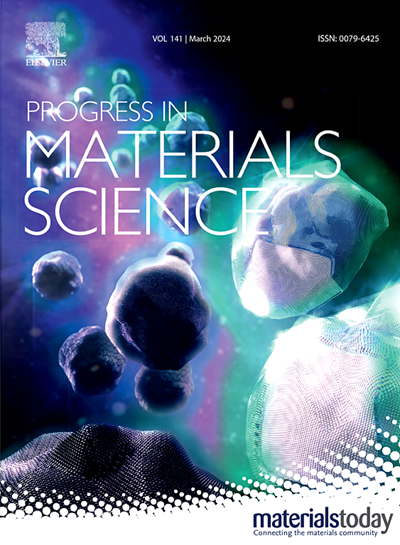Dynamic bioinks for tissue/organ bioprinting: Principle, challenge, and perspective
IF 40
1区 材料科学
Q1 MATERIALS SCIENCE, MULTIDISCIPLINARY
引用次数: 0
Abstract
Bioprinting that can quickly generate custom-shaped organ-like constructs opens up a new horizon for tissue engineering and regenerative medicine. The importance of bioinks cannot be overemphasized in advancing bioprinting development. Superior to conventional static bioink, dynamic bioink, mimicking the natural extracellular matrix, possesses reversible dynamic molecular networks that provide cellular activity and growth and thus enhance the maturation of bioprinted organ-like constructs, which has gained lots of attention and developed rapidly in the past decade. This paper completely summarizes the progress of dynamic bioink in bioprinting. First, we outline the molecular design principle of dynamic bioinks, involving two main patterns: supramolecular force and reversible chemical bonding. Then, key factors of dynamic bioinks in advancing bioprinting, including printability, structural stability, and modulation of cell behavior, are highlighted. Finally, the review further discusses the challenges and perspectives in fabricating tissues and organs with dynamic bioinks, aiming to offer an illuminating insight into bioprinting.


用于组织/器官生物打印的动态生物墨水:原理、挑战和前景
生物打印可以快速生成定制形状的类器官结构,为组织工程和再生医学开辟了新的视野。生物油墨在推动生物打印发展方面的重要性再怎么强调也不为过。与传统的静态生物链接相比,动态生物链接具有可逆性的动态分子网络,模拟天然的细胞外基质,提供细胞活性和生长,从而促进生物打印类器官结构的成熟,在过去的十年中得到了广泛的关注和迅速发展。本文全面综述了动态生物链接技术在生物打印中的研究进展。首先,我们概述了动态生物墨水的分子设计原理,涉及两种主要模式:超分子力和可逆化学键。然后,强调了动态生物墨水在推进生物打印中的关键因素,包括可打印性、结构稳定性和细胞行为的调节。最后,综述进一步讨论了动态生物墨水制造组织和器官的挑战和前景,旨在为生物打印提供启发性的见解。
本文章由计算机程序翻译,如有差异,请以英文原文为准。
求助全文
约1分钟内获得全文
求助全文
来源期刊

Progress in Materials Science
工程技术-材料科学:综合
CiteScore
59.60
自引率
0.80%
发文量
101
审稿时长
11.4 months
期刊介绍:
Progress in Materials Science is a journal that publishes authoritative and critical reviews of recent advances in the science of materials. The focus of the journal is on the fundamental aspects of materials science, particularly those concerning microstructure and nanostructure and their relationship to properties. Emphasis is also placed on the thermodynamics, kinetics, mechanisms, and modeling of processes within materials, as well as the understanding of material properties in engineering and other applications.
The journal welcomes reviews from authors who are active leaders in the field of materials science and have a strong scientific track record. Materials of interest include metallic, ceramic, polymeric, biological, medical, and composite materials in all forms.
Manuscripts submitted to Progress in Materials Science are generally longer than those found in other research journals. While the focus is on invited reviews, interested authors may submit a proposal for consideration. Non-invited manuscripts are required to be preceded by the submission of a proposal. Authors publishing in Progress in Materials Science have the option to publish their research via subscription or open access. Open access publication requires the author or research funder to meet a publication fee (APC).
Abstracting and indexing services for Progress in Materials Science include Current Contents, Science Citation Index Expanded, Materials Science Citation Index, Chemical Abstracts, Engineering Index, INSPEC, and Scopus.
 求助内容:
求助内容: 应助结果提醒方式:
应助结果提醒方式:


